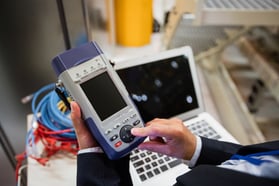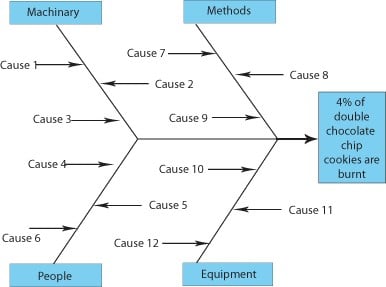As a food manufacturer, sub-optimal machinery functioning limits your production speed and flexibility and erodes profits. Moreover, low machine productivity hurts your ability to pursue lean initiatives; leveraging just-in-time or production leveling is nearly impossible while suffering through unexpected downtime, slow machine speeds, and/or low manufacturing quality.
To clear the path for a wide range of lean initiatives, companies use total productive maintenance (TPM), a lean methodology that has proven successful for nearly 50 years.
This post explores TPM and how it streamlines your food manufacturing operations; it’s the third post in our series on lean for food manufacturers. You can read the first two posts here and here.
The Tenets of Total Productive Maintenance
TPM is meant to improve manufacturing and business processes from the perspective of maintenance management. It focuses on productivity improvement by maximizing production machine availability and performance with preventive and routine maintenance. While valuable for all food manufacturers, the highest return on TPM is in facilities with complex machines that lack excess capacity or have escalating maintenance costs.
Through TPM, you empower operators and production leads to follow established routines around day-to-day inspection, cleaning, and lubricating of machines as well as raising red flags on potential issues.
The eight pillars of TPM are:
- Autonomous maintenance: Operators monitor the condition of their own equipment and work areas.
- Process and machine improvement: Team leaders collect information from operators and work areas, then prioritize preventive maintenance and improvements.
- Preventive maintenance: Operators and team leaders share preventive maintenance tasks and schedules.
- Early management of new equipment: Team leaders anticipate and plan for parts of equipment lifecycles and report to managers based on maintenance reports.
- Process quality management: Shared responsibility for operation and maintenance encourages quality improvement ideas from all areas of work.
- Administrative work: Managers prioritize data from the previous pillars and share outcomes with team leaders and work areas.
- Education and training: Continuous improvement includes operator and work area education and training, which improves morale, retention, and efficiency.
- Safety and sustained success: Facility-wide safety is prioritized, which positively affects the long-term success of the TPM program.
As you can see from the pillars of TPM, front-line production personnel and management simultaneously and collectively take ownership of optimizing machine-based productivity. Who better to care for a machine than the people who operate and depend on its performance for safety, quality, and productivity?
How TPM Works
The starting point of TPM is raising awareness among employees regarding the hidden losses* inherent in machines. Beyond the obvious machine failure or slowing, the list may include lengthy set-up time, time-induced rises in defect rates, a lack of qualified operators, etc. Anything that prevents a machine from running at full speed, full quality, and full time is a productivity loss to target for improvement.
A multi-level TPM team is better at identifying problems that affect your goal of 100% machine productivity. For example, a machine may be suffering productivity losses in three ways, all identified by different personnel. Machine operators may notice that it overheats and needs lubrication every few hours. The production manager may find the warehouse fails to deliver product inputs on time, every time. And the quality inspectors may find more defects in Shift 1 than Shift 2.
Each drain on machine productivity must be identified and rectified by different people in different ways. If they’re all working toward the TPM goal, it’s more likely everyone will pitch in to solve the problem.
Conclusion
We’ve only scraped the surface of TPM. Upon deeper inspection, you can transform your widely-varied staff into one team that always pulls toward the same goal. At the same time, you can realize higher profitability arising from higher levels of machine productivity.
*In loss-free processes, the overall equipment effectiveness (OEE) of all machines is 100%, meaning every machine always operates at full speed and delivers only good-quality products. There are, however, no loss-free processes. In fact, the OEE is often as low as 40-50%; TPM’s goal is to increase the OEE to 80% on each machine.










Leave a comment